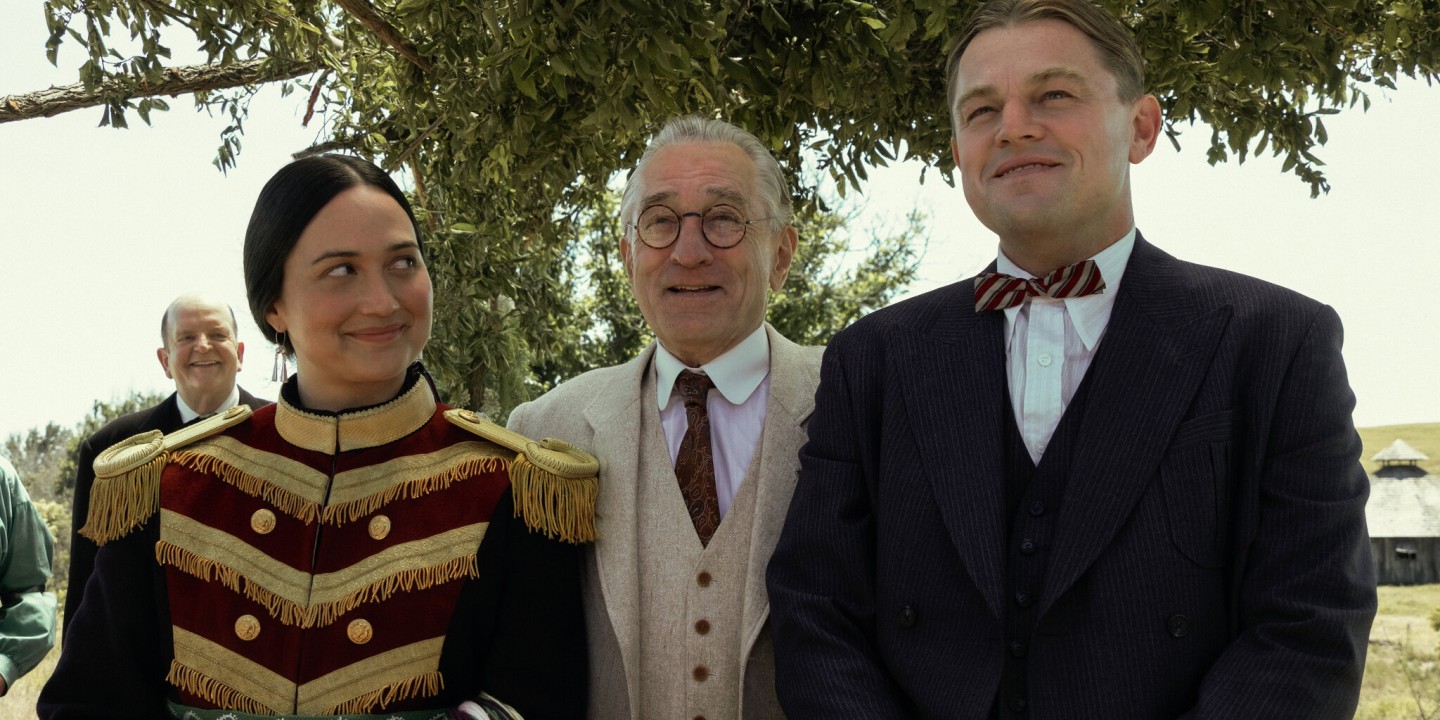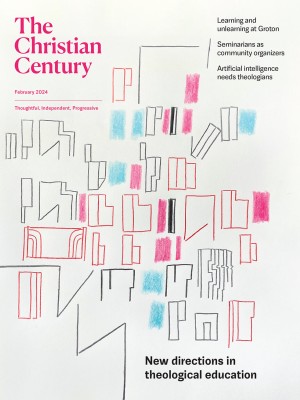The wedding may be the most important scene in Killers of the Flower Moon
In Martin Scorcese’s telling of the Osage Indian murders, all the violent contradictions of history unfold in domestic intimacy.

About a third of the way through Martin Scorsese’s slow-building epic Killers of the Flower Moon, we witness the marriage of Mollie Kyle (Lily Gladstone) and Ernest Burkhart (Leonardo DiCaprio). Mollie arrives at the wedding in 18th-century American military garb over layers of handmade Osage beadwork and woven fringe. Other guests and wedding attendants are similarly attired in magnificent and ornate clothing and accessories. It is a glorious feast of color and costume, meticulously recreating Osage wedding customs from 1920s historical records. It is an unforgettable moment in the three-and-a-half-hour film and a beautiful example of how carefully the creative team, which included many Osage advisers and skilled craftspeople, attempted to capture this moment of Osage and US history.
For all the scene’s historical veracity, it also feels like a fantastical counterhistory to the stories we associate with this era. White characters willingly and joyfully embrace Osage ritual practices, chanting, singing, and clapping along with the rite. In the history of most encounters between Native Americans and European Americans there are few examples of this kind of ritual flexibility on the part of White people. Native practices were largely scorned or actively destroyed through assimilation policies. In this wedding ritual we glimpse an unexpected world where two different cultures appear to be equals of a kind, attempting something like genuine exchange.
Read our latest issue or browse back issues.
Even as we watch, we know it is a counterhistory in a darker, more devastating way. The film is an adaptation of the book of the same name by journalist David Grann, which tells the story of the unprecedented wealth the Osage acquired in the early 20th century when oil was discovered on their reservation, and the systematic, widespread conspiracy by White settlers in Osage territory to manipulate and murder them for their wealth.
Scorsese intentionally reframes his adaptation around the love story of Ernest and Mollie. He eschews exposition or historical explanation. There is no discussion of the long process of Indigenous massacre and displacement that led the Osage to settle on the land that eventually made them rich. Nor does the film explain the federal policy that declared most of the newly wealthy Osage “incompetents” and assigned them White guardians, opening the channel by which their wealth could pass into White hands after their deaths. These realities are gestured to in dialogue but never explained.
Instead, the film keeps circling Mollie and Ernest’s marriage like a cipher at its heart, opaque no matter how much we know of it. All the violent contradictions of history unfold in domestic intimacy. We see the deep currents of racism against Native people in the horrified White aunt who shows up for Sunday dinner; we listen as Mollie gossips with her sisters about the White men they have married or dated as they attempt to figure out the line between real love and the greed that they know motivates their suitors. We watch Ernest learn Osage to comfort Mollie in her grief. We come to believe that Mollie and Ernest really did love one another and find solace in their marriage. How, the film forces us to ask, could this all be true at once?
Unlike in the book, there is no doubt throughout the film who killed the Osage or why—indeed, the who-done-it is answered almost immediately. But the clarity of plot only points to a deeper mystery of how those who enacted such bald and unprovoked violence could live in such intimate proximity with their victims. I have had many debates with friends about whether the film lets the viewer off the hook by making the horror of what happened seem like the moral failings of just a handful of weak-willed White men who were manipulated by one particularly devious ringleader. If that is the case, it is easy, especially for non-Native viewers, to explain away what we are watching as though it has no history or no bearing on our present.
Days after seeing the film, I kept returning in my mind to that wedding scene. What did this ceremony represent for Mollie and Ernest and their communities? What kind of cultural exchange and intermarriage of values did they hope to achieve? Ernest is joyful and sheepish in his good fortune, clearly in love. But he has already told us what values he brings to the ceremony. “I do love money!” he announces with boyish glee when being presented with the idea of marrying a rich Osage woman. This value— accumulating and maintaining control over wealth—emerges as the essence of White culture in the film. Anything can be justified by the desire to make sure wealth flows into White hands and White lands. Mollie is also joyful and hopeful at her wedding, but there is an edge of reserve in her bearing, as though she can’t see clearly what she is marrying into or can’t believe what she sees.
Earlier in their courtship, Mollie and Ernest have dinner in her home. He is eager to break out the whiskey and see where the night will take them. When a thunderstorm breaks on the plains and rain begins to pelt through the open window, Ernest rushes to close it but Mollie insists they must sit quietly, listening to the storm, being present to it. Ernest plays along, but we can see the effort it is costing him, his hands itching toward the whiskey bottle.
In this silent moment, two very different systems of meaning and value are on display, differences more profound than the clothing one wears to a celebration or even the words spoken in a holy rite. Mollie is inviting Ernest into another way of being with her. But to really join her would require silence on Ernest’s part, a patience to listen. This is something Ernest cannot do, to devastating ends. But in its slow unfolding and refusal to pontificate, the film may be making the same invitation to viewers.






